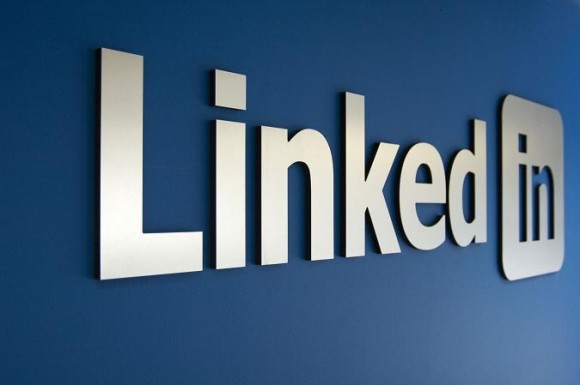 Facebook is becoming more intuitive and taking strides to give Facebook page administrators more creative control over their pages. There are several new features that make it possible to have a somewhat cohesive theme throughout the page as a whole.
Facebook is becoming more intuitive and taking strides to give Facebook page administrators more creative control over their pages. There are several new features that make it possible to have a somewhat cohesive theme throughout the page as a whole.
Blog
The Problem with Every TOS You Sign

Last month, a change to the Instagram terms of service (TOS), which was scheduled to go into effect January 16th, sparked controversy as it led many users to believe that photos uploaded to the system could be used in advertisement without payment. Fortunately, the controversy turned out to be much ado about nothing as Instagram not only clarified but backed away from the new TOS.
Still, it appears that at least some damage has already been done. Some figures estimate that Instagram may have lost as much as 25% of its users after the debacle and competitors, such as Flickr, are stepping up to snatch those users up.
But even if the impasse blows over, it’s just the latest in a long line of TOS-related controversies including Google Drive, Craigslist, Ancestry.com and many more.
However, the problem isn’t just with those sites and services, in fact, it isn’t limited to any one company or kind of company at all. The problem is with the Web itself and with the way we handle contracts.
As we discussed back in March, you sign a variety of contracts to run your site but the problem is that all of those contracts are horribly one-sided. They are all written and signed for the sole purpose of protecting the company that wrote it, not you.
This is something to keep in mind the next time you click “I accept” on a TOS, as you are giving the company you’re signing with an incredible amount of power and trust. Trust that may be misplaced. [Read more…] about The Problem with Every TOS You Sign
What NOT to Do on LinkedIn
LinkedIn is a great place to connect with potential clients, customers, and people you worked with before and in the present. Many LinkedIn users are not using this popular social network properly, thus making it difficult for them to be successful. It is important to follow these basic guidelines to understand how to make the most out of your LinkedIn profile and activity. Below is a few guidelines of what not to do on LinkedIn.
Spam Groups
LinkedIn groups can be a great resource for users that want to connect with other business people in their community, industry, or those that have common interests. However, just because the LinkedIn groups that you have joined share your common interests or location, it is not okay to spam the groups with self-promotional information and other types of advertisements that are not useful to the group. This is seen as an abuse of the privilege of joining LinkedIn group. Please be respectful of other users’ time and only post content or information that is directly useful to those users.
It is okay to share your most recent blog post for an upcoming event in your area that your company is hosting, but repeatedly sharing a link to download an e-book or posting salesy messages will make you look less reputable and people will be less likely to be interested in what you have to say in the future.
Add people you don’t know without introducing yourself
Never add someone to LinkedIn as a connection that you haven’t met in person before or through email/phone, without at least introducing yourself first. The whole purpose of LinkedIn is connecting with people you already know, and trying to add strangers as connections shows US someone that is only interested in expanding your own network, without getting to know the people you are trying to connect to. If you do want to connect with the stranger, in the connection introduction, give a brief overview of who you are and what you do, along with why you would like to connect them.
Have an Incomplete Profile
LinkedIn is continuously updating the options in available profile fields for its users. Be sure to regularly go through your own personal profile, it slows your company profile, and make sure that all available fields are complete and filled in. Not doing so is not allowing you to make full use of what is available on LinkedIn. Stay up-to-date on LinkedIn news and updates so you know when the best times are to add new information to your profile.
Not Participate
Simply filling out your LinkedIn profile and going on your way is it taking full advantage of what LinkedIn offers as far as communicating with others in your field or industry. Join a few applicable groups, answer questions in LinkedIn Answers, and update your profile status regularly. This shows that you are an active LinkedIn user and thus are more reputable to users that are viewing your profile.
Four Online Tools to Help You Be More Productive Online
When you are a social media marketer or just spend a lot of time on the internet, there are several tools you can use to make the work you do much more productive. In some cases, if the tool is saving you a lot of time and energy, it is worth paying for. Peace of mind and higher output levels are usually worth the cost, especially if they are going to be used every day.
Buffer
Buffer is a social sharing app that is so easy to use. They have a basic account that is free, but then an “awesome plan” that allows you to add up to 12 social media accounts to post on for $10 per month. This includes Twitter, LinkedIn, and Facebook. Buffer picks times that most users are on social media (the morning, lunch time, afternoon, and after dinner) and then sends your message out then. You build up a buffer queue that only sends out the messages at these chosen times (which you can change). It makes sharing painless, quick, and easy, especially since they have browser plugins and a mobile app.
SoundGecko
SoundGecko is a FREE content transcribing service. Simply enter in the URL of the blog post, article, or other piece of content that you want to transcribe, and SoundGeck then emails you a link to the MP3 of the content. You can either stream it from the website (they only host it temporarily, however) or you can download the MP3 to listen to it in your car, iPod, or turn into a CD. This is a great way to consume content when you don’t have the time to read it on a screen.
Brosix
Brosix is a simple instant messenger that has both a free public version and a paid enterprise version, which allows companies to have their own private instant messaging network. Both versions have most of the same great features, including a collaborative whiteboard that lets you draw out ideas with other users in real-time and a co-browsing feature, which lets one user browse the internet with another. Other features like secure file transfer and screen sharing make this a great secure instant messenger. It is available for Mac, PC, Linux, and iPhone.
Evernote
Evernote has been recommended by hundreds of people online, and with good reason. It is a great way to write blog posts, take notes, or save other content and then access it via another computer, tablet, or phone. Having a central account that stores your documents on the cloud makes it easy to collaborate with other users or get your documents from almost anywhere. They have a premium version that is $5/month or $45/year.
Whatever your favorite online tools are, the internet is constantly providing great ways to be more productive without breaking the bank.
What are your favorite online tools?
3 Self-Gifts to Protect Your Blog Legally
 The holiday season, for most, is a time for giving gifts to others. However, it’s also often a time of being generous to oneself and enjoying the finer things in life that, often times, we deprive ourselves most of the year.
The holiday season, for most, is a time for giving gifts to others. However, it’s also often a time of being generous to oneself and enjoying the finer things in life that, often times, we deprive ourselves most of the year.
When it comes to your blog and the laws that govern it, it’s no different. Many of us ignore the basic steps that we can take to protect ourselves legally thinking that it’s too expensive, too time-consuming or generally not worthwhile. However, the moment a legal crisis hits, we often begin to regret that thinking.
So, with the holidays upon us and, perhaps with a little more time on the clock and income in our pocket, the time has come to reevaluate how we protect ourselves legally and maybe take a few extra steps to ensure a brighter future for our sites and ourselves.
On that note, here are three legally-minded gifts that you can give yourself right now and better protect you and your work for years to come. [Read more…] about 3 Self-Gifts to Protect Your Blog Legally
Stay Updated on Social Media with Webinars
There are a variety of well-curated internet and social media marketing blogs and websites that offer great free webinars about social media. Regularly listing to webinars or podcasts from experts in the field that you are trying to improve on can help increase your expertise while keeping you up-to-date with the best marketing practices. Below are some great webinar resources for marketers looking to keep their skills sharp.
Hubspot: You can’t fault Hubspot for following their own advice when it comes to offering free resources to customers and users. Their Internet Marketing Webinar section of Hubspot.com has several free webinars about social media and internet marketing. You can view a live webinar or view all of their past webinars on demand.
Social Media Today: Social Media Today has a occasional webinars that tie in to current news and events. As these webinars are live, it’s important to check the webinar pages often to see a schedule of upcoming webinars.
Buddy Media/Salesforce: Buddy Media is a company owned by Salesforce.com, and has a great list of on-demand Social Media Webinars. They also offer free white papers.
HootSuite: If you use HootSuite for your social media marketing, they offer related webinars that show users how to use their products to improve their social media marketing.
VerticalReponse: VerticalResponse has a list of their past recorded webinars that can be listened to at any time. Each webinar focuses on a different expert and their take or expertise on a particular topic.
It is important to note that many of these webinars are viewable once you fill out a form giving the company your information. While free webinars are definitely a resource that can help your marketing strategy, it is OK to be wary about what information you give to companies. Each of the above mentioned are reputable, but be sure to make sure that the company is legitimate and practices the same methods they preach.
Other free resources that can help you increase your social media marketing knowledge include podcasts, audiobooks (if you check them out from the library), and white papers. In addition, subscribing to social media marketing blogs is an easy way to stay updated. SoundGecko is a free service that will transcribe articles into MP3s (and then email them to you) so you can also listen to them while driving, working, or exercising. For many, listening to information can help them retain it much better.
How to Verify Your Website on Pinterest
Pinterest now offers the ability to verify your website on your profile. This not only further legitimates your profile to customers and followers, it also helps Pinterest better determine which profiles are real people and which are spam. Because you can only verify a website you actually own, this prevents spammers from creating accounts pretending to be a certain individual or company.
To verify your website on Pinterest, first make sure it is added to your profile in Pinterest. Then, go to the domain verification page to begin the process. Pinterest will give you a meta tag to embed in your website:
you can also upload a text file to the root folder of your website (this requires FTP or back-end access and can’t be done via WordPress or some other CMS system).
Once this is completed, you will ask Pinterest to verify that the file or meta tag is on your website. Once this is completed, your website will be verified and will have a check mark next to it on your profile:
One important thing to be aware of is the fact that you can’t verify the same website on 2 different Pinterest profiles. Each profile must have a unique website. This doesn’t include subdomains or different pages of a website, like coats.com/fur. If coats.com was already claimed on a separate profile, another Fur profile couldn’t claim coats.com/fur. This may be an issue for larger portal sites that have different sections, such as The Huffington Post Health and The Huffington Post Politics sections. While these could theoretically have different Pinterest profiles that are independently successful, they most likely couldn’t both claim a domain that is a variation of huffingtonpost.com.
Of course, this isn’t a hard and fast rule and perhaps Pinterest support might be able to make an exception, but if your company website is on a smaller level, be sure you are verifying the right website on the right profile.
Additionally, because your website is represented as part of your Pinterest profile, make sure that your profile correctly reflects your website. In the second graphic above, for example, my personal profile is shown but I accidentally verified my company website. I should have verified my personal blog instead. Pinterest support has luckily helped me clarify this, but it took a few days and emails.
Save the time and hassle by making sure your website is correctly verified on Pinterest the first time it is done.
A Brief Primer on Section 230 Protections
 Two weeks ago, in my article on laws that bloggers can be thankful for, I wrote that one of five laws was Section 230 of the Communications Decency Act (CDA).
Two weeks ago, in my article on laws that bloggers can be thankful for, I wrote that one of five laws was Section 230 of the Communications Decency Act (CDA).
Indeed, of the five laws listed, Section 230 probably does more to protect bloggers, forum administrators and other webmasters than any other on the list. However, it’s also the law that seems to be least understood.
So, to help bloggers understand their rights when dealing with content provided by third parties, I’ve prepared a relatively brief primer on Section 230 including its history, what it says and how it applies to blogging.
However, in addition to this one, I also highly recommend checking out the EFF’s guide on the topic as it covers some slightly different ground.
On that note, we’re brought to our first question: How did Section 230 come about? [Read more…] about A Brief Primer on Section 230 Protections





